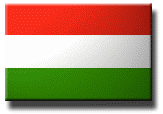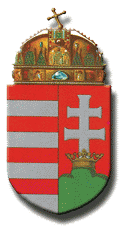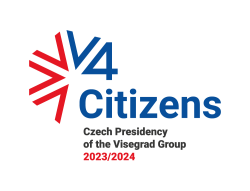
Thu 25 April 2024
Warszawa (PL)
5/2°C
| Tue | Wed | Thu | Fri | Sat |
|---|---|---|---|---|
| 11 | 8 | 11 | 14 | 20 |
Thu 25 April 2024
Praha (CZ)
1/-1°C
| Tue | Wed | Thu | Fri | Sat |
|---|---|---|---|---|
| 11 | 10 | 12 | 15 | 21 |
Thu 25 April 2024
Bratislava (SK)
3/4°C
| Tue | Wed | Thu | Fri | Sat |
|---|---|---|---|---|
| 11 | 10 | 13 | 16 | 18 |
Thu 25 April 2024
Budapest (HU)
3/1°C
| Tue | Wed | Thu | Fri | Sat |
|---|---|---|---|---|
| 16 | 11 | 13 | 17 | 21 |
Basic Facts about Hungary
Basic Facts about Hungary

Official name of the country: THE REPUBLIC OF HUNGARY (Magyar köztársaság)
Conventional short name: HUNGARY (Magyarország)
Capital: Budapest, 1,719,342 residents (2004)
Area: 93,036 sq kilometres
Population: 9,981,334 (July 2006 est.)
Population by ethnic composition: Hungarians 92.3%; 200-220,000 Germans, 100-110,000 Slovaks, 80-90,000 Croats, 25,000 Romanians, 5000 Serbs, 5000 Slovenes, 10,000 Polish, 3000 Greeks, 1500 Armenians, 3000 Bulgarians, 6000 Ruthenians, 2000 Ukrainians. According to estimates there about 400-600,000 Roma living in Hungary.
Population by religions: Roman Catholic 51.9%, Calvinist 15.9%, Lutheran 3%, Greek Catholic 2.6%, other Christian 1%, other or unspecified 11.1%, unaffiliated 14.5% (2001 census)
Area: 93,036 sq kilometres
Population: 9,981,334 (July 2006 est.)
Population by ethnic composition: Hungarians 92.3%; 200-220,000 Germans, 100-110,000 Slovaks, 80-90,000 Croats, 25,000 Romanians, 5000 Serbs, 5000 Slovenes, 10,000 Polish, 3000 Greeks, 1500 Armenians, 3000 Bulgarians, 6000 Ruthenians, 2000 Ukrainians. According to estimates there about 400-600,000 Roma living in Hungary.
Population by religions: Roman Catholic 51.9%, Calvinist 15.9%, Lutheran 3%, Greek Catholic 2.6%, other Christian 1%, other or unspecified 11.1%, unaffiliated 14.5% (2001 census)
Administrative divisions: 19 counties (megyek), 20 urban counties, 1 capital city

Counties/regional capitals:
Type of government: Parliamentary republic
Constitutional system: legislative (unicameral Parliament, 386 seats), executive (President of the Republic of Hungary, Government of the Republic of Hungary), judicial (Supreme Court)
Last Parliamentary elections held in April 2010:
FIDESz (Hungarian Civil Alliance) 52.7%
MSzP (Hungarian Socialist Party) 19.3%
Jobbik 16.7%
Membership in leading international organizations: International organizations: ACCT (observer), Australia Group, BIS, CE, CEI, CERN, EAPC, EBRD, EIB, ESA (cooperating state), EU (new member), FAO, G-9, IAEA, IBRD, ICAO, ICC, ICCt, ICFTU, ICRM, IDA, IEA, IFC, IFRCS, ILO, IMF, IMO, Interpol, IOC, IOM, IPU, ISO, ITU, MIGA, MINURSO, NAM (guest), NATO, NEA, NSG, OAS (observer), OECD, OIF (observer), OPCW, OSCE, PCA, SECI, UN, UNCTAD, UNESCO, UNFICYP, UNHCR, UNIDO, UNOMIG, UPU, WCL, WCO, WEU (associate), WFTU, WHO, WIPO, WMO, WToO, WTO, ZC and many others.
|
|
|||
| Economics: | Unit: |
Value:
|
Year:
|
| HDP | (bil. USD) |
184.9
|
(2009 est.)
|
| HDP per capita | (USD) |
18,600
|
(2009 est.)
|
| Export | (bil. USD) |
83.34
|
(2009 est.)
|
| Import | (bil. USD) |
76.89
|
(2009 est.)
|
| Currency |
-
|
forint (HUF)
|
-
|
National Holidays of the Republic of Hungary:
|
15
|
March |
Outbreak of the 1848-49 revolution and War of Independence; Birth of the modern, parliamentary Hungary
|
|
20
|
August | St. Stephen's Day (1000) |
|
23
|
October | Outbreak of the 1956 revolution and freedom fight; proclamation of the Republic of Hungary (1989) |
(Out of these national holidays, 20 August is the state holiday of the Republic of Hungary.)
The Republic of Hungary is a democratic, politically, economically and socially stable country located in Central Europe. Since 1989 Hungary has established a complete system of institutions for a state governed by the rule of law, built a functioning market economy. The Republic of Hungary supports the common effort of democratic nations to build and strengthen a community of peace, security, cooperation, democracy and prosperity. It supports the European integration process and the vision of a united, democratic, socially just, prosperous, peaceful and tension-free Europe, a continent of independent citizens and cooperating regions.
Further information:
Brief history of Hungary
Links to Hungary
 Photographs of Hungary (European Quartet)
Photographs of Hungary (European Quartet)
The Republic of Hungary is a democratic, politically, economically and socially stable country located in Central Europe. Since 1989 Hungary has established a complete system of institutions for a state governed by the rule of law, built a functioning market economy. The Republic of Hungary supports the common effort of democratic nations to build and strengthen a community of peace, security, cooperation, democracy and prosperity. It supports the European integration process and the vision of a united, democratic, socially just, prosperous, peaceful and tension-free Europe, a continent of independent citizens and cooperating regions.
Further information:
Brief history of Hungary
Links to Hungary







